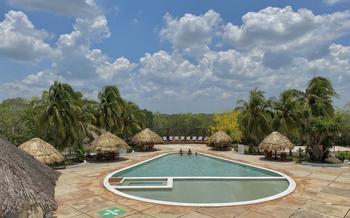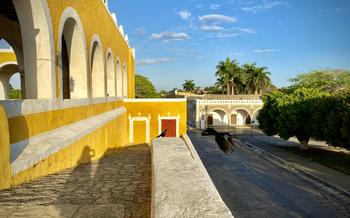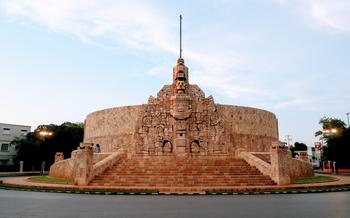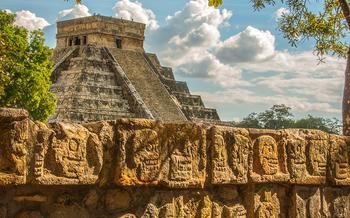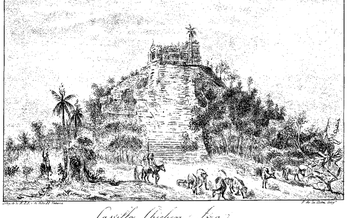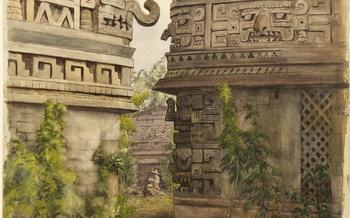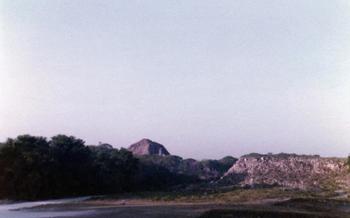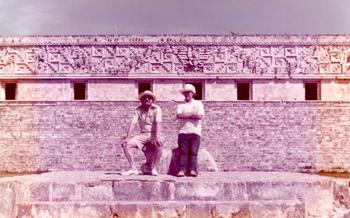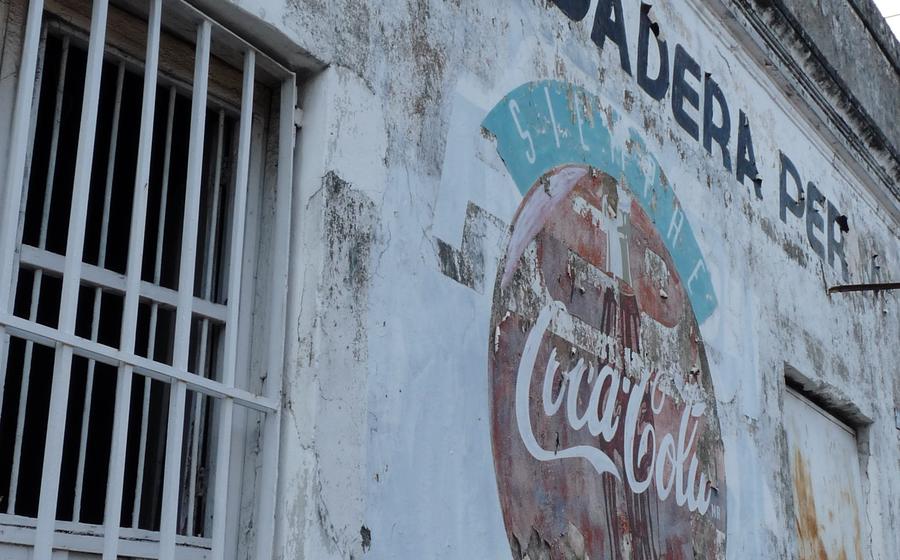
Museo del Pueblo Maya de Dzibilchaltún
- A Journey to the Maya Legacy: Exploring the Museo del Pueblo Maya de Dzibilchaltún
- Stepping into the Realm of the Maya: A Glimpse into Dzibilchaltún
- A Symphony of Architecture and Art: Exploring the Museum's Exhibits
- The Templo de las Siete Muñecas: A Sacred Landmark
- Unearthing the Secrets: The Archaeological Zone of Dzibilchaltún
- Interactive Learning: Engaging with the Maya Culture
- A Culinary Journey: Savoring the Flavors of Yucatán
- Shopping for Souvenirs: A Touch of Maya Culture
- Accommodations: Finding Your Home Away from Home
- Transportation: Getting to the Museum and Beyond
- Planning Your Visit: Making the Most of Your Time
- Safety Tips: Ensuring a Smooth and Enjoyable Experience
- Capturing Memories: Photography and Social Media Guidelines
- Language and Communication: Bridging Cultural Gaps
- Insider Tip: Uncovering Hidden Gems
A Journey to the Maya Legacy: Exploring the Museo del Pueblo Maya de Dzibilchaltún
The Museo del Pueblo Maya de Dzibilchaltún stands as a testament to the rich cultural heritage of the Maya civilization. Established in 1988, this museum is dedicated to preserving and showcasing the legacy of this ancient civilization that once flourished in the Yucatán Peninsula. The museum's collection boasts a vast array of artifacts, from intricate sculptures and ceramics to everyday tools and utensils, providing visitors with a glimpse into the lives and customs of the Maya people.
The Museo del Pueblo Maya de Dzibilchaltún is not merely a repository of artifacts; it is a living testament to the enduring spirit of the Maya. Through its exhibits and educational programs, the museum strives to foster a deeper understanding and appreciation of Maya culture, ensuring that the legacy of this ancient civilization continues to inspire and enrich future generations.
Located just a short distance from the ancient Maya city of Dzibilchaltún, the museum is easily accessible to visitors from Mérida and beyond. The museum's proximity to the archaeological site allows visitors to immerse themselves fully in the world of the Maya, exploring both the tangible remains of their civilization and the vibrant cultural legacy that lives on today.
Stepping into the Realm of the Maya: A Glimpse into Dzibilchaltún
Dzibilchaltún, an ancient Maya city located just north of Mérida in the Yucatán Peninsula, holds a significant place in Maya history. Dating back to the Pre-Classic period, around 500 BCE, it was once a thriving metropolis with a population of over 20,000 people. The city was strategically positioned along trade routes, enabling its inhabitants to engage in commerce and cultural exchange with other Maya centers. Its location also provided access to valuable natural resources, such as water and fertile land, which contributed to its growth and prosperity.
The ruins of Dzibilchaltún reveal the grandeur and complexity of the ancient Maya civilization. Visitors can explore the remains of temples, palaces, and residential structures, each adorned with intricate carvings and elaborate artwork. The site also features a cenote, a natural sinkhole that was a vital source of water for the Maya and held religious significance. As one of the most important archaeological sites in the Yucatán, Dzibilchaltún offers a glimpse into the rich and vibrant world of the ancient Maya.
The Museo del Pueblo Maya de Dzibilchaltún is closely intertwined with the archaeological site. The museum serves as a gateway to understanding the history, culture, and daily life of the Maya people who once inhabited this region. Through its exhibits, artifacts, and educational programs, the museum provides visitors with a deeper appreciation for the legacy of the Maya civilization and its enduring influence on the Yucatán Peninsula.
A Symphony of Architecture and Art: Exploring the Museum's Exhibits
The Museo del Pueblo Maya de Dzibilchaltún houses a vast and diverse collection of Maya artifacts that provide a glimpse into the civilization's rich cultural heritage. These artifacts, carefully curated and displayed, showcase the Maya's advanced knowledge, artistry, and craftsmanship. Among the highlights of the collection are intricate stone carvings, finely crafted ceramics, and elaborate jade ornaments. These artifacts offer insights into the Maya's religious beliefs, social structure, and daily life.
The museum's exhibits are designed to engage visitors of all ages through multimedia presentations, interactive displays, and hands-on activities. These interactive elements bring the Maya culture to life, allowing visitors to experience the civilization's legacy in a tangible way. The museum also features a replica of a Maya house, where visitors can learn about the Maya's domestic life and architecture.
By showcasing these artifacts and providing interactive learning experiences, the Museo del Pueblo Maya de Dzibilchaltún plays a crucial role in preserving and promoting the Maya's cultural heritage. It serves as a bridge between the past and the present, ensuring that the legacy of this ancient civilization continues to inspire and captivate future generations.
The Templo de las Siete Muñecas: A Sacred Landmark
Amidst the ruins of Dzibilchaltún, the Templo de las Siete Muñecas (Temple of the Seven Dolls) stands as a testament to the Maya's architectural prowess and religious beliefs. Constructed around the 10th century AD, this unique temple derives its name from the seven clay figurines discovered within its walls, each representing a different Maya deity. These figurines, along with the temple's intricate carvings and iconography, provide valuable insights into the spiritual practices and beliefs of the ancient Maya.
The temple's design showcases the Maya's advanced understanding of astronomy and mathematics. Aligned with the cardinal directions, it features a corbelled arch doorway and a false vault ceiling, demonstrating the Maya's mastery of construction techniques. The temple's walls are adorned with bas-reliefs and stucco sculptures depicting Maya rulers, deities, and mythological scenes, offering a glimpse into their rich iconography.
The Templo de las Siete Muñecas holds profound religious significance for the Maya. It is believed to have been a place of worship, where rituals and ceremonies were performed to honor the Maya gods and seek their favor. The temple's location within the ancient city of Dzibilchaltún suggests its importance as a religious center, where the Maya community gathered for spiritual guidance and ceremonies.
Preserving and conserving the Templo de las Siete Muñecas is crucial for protecting the cultural heritage of the Maya and ensuring that future generations can appreciate this architectural and religious masterpiece. Ongoing efforts are being made to restore and maintain the temple, while also ensuring that its integrity and authenticity are preserved. By protecting this sacred landmark, we honor the legacy of the Maya and keep their cultural traditions alive for generations to come.
Unearthing the Secrets: The Archaeological Zone of Dzibilchaltún
Unveiling the mysteries of the ancient Maya city of Dzibilchaltún, the archaeological zone invites visitors to journey through time and explore the remnants of a once-thriving civilization. Excavations conducted at the site have revealed a treasure-trove of artifacts, shedding light on the Maya's advanced knowledge of astronomy, mathematics, and architecture.
The process of excavation has been a meticulous and challenging endeavor, requiring patience, precision, and a keen eye for detail. Archaeologists have carefully unearthed structures, artifacts, and inscriptions, piecing together the intricate puzzle of Maya history. Despite the challenges, the rewards have been immense.
Among the most significant discoveries at Dzibilchaltún is the Cenote Xlacah, a natural well that served as a vital water source for the Maya. The cenote's depth and clarity have allowed for the preservation of organic materials, including wooden artifacts and textiles, providing invaluable insights into Maya daily life.
The archaeological zone also boasts impressive structures, such as the Templo del Sol and the Templo de las Siete Muñecas. These architectural marvels showcase the Maya's mastery of construction techniques and their deep connection to celestial phenomena. The temples align with astronomical events, demonstrating the Maya's sophisticated understanding of the cosmos.
Protecting and preserving the archaeological zone of Dzibilchaltún is of paramount importance. As a testament to its cultural significance, the site has been designated as a UNESCO World Heritage Site. Ongoing conservation efforts aim to safeguard the ruins from the elements and human impact, ensuring that future generations can continue to marvel at the wonders of the ancient Maya civilization.
Interactive Learning: Engaging with the Maya Culture
The Museo del Pueblo Maya de Dzibilchaltún offers a range of educational programs and initiatives designed to engage visitors of all ages with the rich Maya culture. Interactive exhibits, hands-on activities, and workshops provide an immersive cultural experience that brings the Maya's history, traditions, and beliefs to life.
The museum utilizes multimedia and interactive displays to enhance the visitor experience and facilitate learning. Touchscreens, audio guides, and virtual reality simulations allow visitors to explore the Maya world in a dynamic and engaging way.
Educational programs are tailored to different age groups, from children to adults. Guided tours led by knowledgeable experts offer insights into the Maya's way of life, their advanced knowledge of astronomy and mathematics, and their intricate social and political systems.
Hands-on workshops provide visitors with the opportunity to engage in traditional Maya crafts, such as weaving, pottery, and embroidery. These workshops not only offer a fun and interactive learning experience but also help to preserve and promote Maya cultural traditions.
The museum's educational initiatives play a vital role in promoting cultural understanding and appreciation. By fostering a deeper connection with the Maya culture, the museum inspires visitors to become ambassadors for its preservation and protection.
A Culinary Journey: Savoring the Flavors of Yucatán
The Yucatán region boasts a rich culinary tradition deeply influenced by the ancient Maya. Yucatecan cuisine is a delightful blend of Maya, Spanish, and Caribbean flavors, creating a unique gastronomic experience for visitors.
When in Mérida, be sure to indulge in local dishes such as cochinita pibil, a slow-roasted pork dish marinated in achiote paste and traditionally cooked in an underground oven. Another must-try is panuchos, a fried tortilla stuffed with black beans and topped with turkey, lettuce, and tomato. For a refreshing treat, sample the sopa de lima, a zesty lime soup made with chicken, tortilla strips, and avocado.
To fully immerse yourself in the culinary heritage of the region, visit local markets such as Mercado Lucas de Gálvez or Mercado 60. Here, you can find a wide variety of fresh ingredients, spices, and traditional dishes prepared by local vendors.
Don't miss the opportunity to try poc chuc, a grilled pork dish served with a tangy tomato-based sauce, or salbutes, fried tortillas topped with shredded turkey, lettuce, tomato, and avocado. And for dessert, indulge in marquesitas, a crispy crepe filled with Edam cheese and Nutella or cajeta (goat's milk caramel).
Preserving and celebrating the region's culinary heritage is essential to maintaining the vibrant culture of the Maya. By savoring the flavors of Yucatán, you not only enjoy a delicious meal but also contribute to the preservation of this rich cultural tradition.
Shopping for Souvenirs: A Touch of Maya Culture
The Maya culture is renowned for its vibrant handicraft traditions, which have been passed down through generations. Shopping for souvenirs in Merida offers visitors a unique opportunity to take a piece of Maya culture home with them.
The city is home to a variety of markets and shops where visitors can find authentic Maya crafts, including textiles, pottery, jewelry, and wood carvings. These handmade items often feature intricate designs and patterns that reflect the Maya's rich cultural heritage.
When shopping for Maya crafts, it is important to support local artisans by purchasing directly from them or from reputable shops that work closely with local communities. This ensures that the artisans receive fair compensation for their work and that the proceeds are reinvested back into the local economy.
By purchasing Maya crafts, visitors not only support local artisans but also contribute to the preservation and promotion of Maya cultural identity. These souvenirs serve as a tangible reminder of the Maya's enduring legacy and allow visitors to share the beauty of Maya culture with others.
Accommodations: Finding Your Home Away from Home
When planning your visit to the Museo del Pueblo Maya de Dzibilchaltún, finding the right accommodation is essential to ensure a comfortable and memorable stay. The area surrounding the museum and the archaeological site offers a range of accommodation options, from budget-friendly guesthouses to luxurious haciendas, catering to different preferences and budgets.
For those seeking an authentic and immersive experience, traditional haciendas provide a glimpse into the region's rich history. These beautifully restored colonial estates offer spacious rooms, lush gardens, and often include amenities such as swimming pools and restaurants. Hacienda Xcanatún and Hacienda Temozón are popular choices that combine comfort with historical charm.
For a more affordable option, guesthouses and smaller hotels offer cozy accommodations at budget-friendly prices. These establishments often have a local feel, allowing guests to connect with the community and experience the warmth of Yucatecan hospitality. Hotel Maya Dzibilchaltún and Posada San Juan are reliable options within walking distance of the museum.
When booking your stay, consider the proximity to the museum and the archaeological site. If you plan on exploring the area extensively, opting for accommodation within walking distance or a short drive is recommended. Additionally, booking in advance, especially during peak seasons, is advisable to secure your preferred choice.
Supporting local businesses plays a crucial role in contributing to the local economy and preserving the region's cultural heritage. By choosing accommodations owned and operated by local families, you not only enjoy authentic experiences but also support the sustainable development of the community.
Transportation: Getting to the Museum and Beyond
To reach the Museo del Pueblo Maya de Dzibilchaltún from Mérida, there are several convenient transportation options available. Public buses depart regularly from the main bus terminal in Mérida, providing an affordable and direct route to the museum. The journey takes approximately 45 minutes, and buses run frequently throughout the day.
For a more flexible travel experience, consider renting a car. This option allows you to explore the region at your own pace, making stops at other attractions along the way. Several car rental agencies are located in Mérida, offering a range of vehicles to suit your needs and budget.
If you prefer a more personalized experience, hiring a taxi is another option. Taxis can be arranged through your hotel or guesthouse, or you can hail one on the street. Be sure to agree on a price before your journey, as taxis in Mexico are not typically metered.
No matter which transportation option you choose, remember to plan your journey in advance, especially if you are visiting during peak season. This will help you avoid any inconvenience and make the most of your time at the museum and archaeological site.
Planning Your Visit: Making the Most of Your Time
To fully immerse yourself in the wonders of the Museo del Pueblo Maya de Dzibilchaltún and the archaeological site, it's crucial to plan your visit strategically. The best time to visit is during the dry season, which runs from November to April, when the weather is at its most pleasant. Aim to arrive early in the morning to avoid the crowds and heat, allowing yourself ample time to explore the exhibits and the site at a leisurely pace. A recommended duration for a visit is around 3-4 hours, providing sufficient time to delve into the museum's treasures and wander through the ancient ruins. To make the most of your visit during peak seasons, consider visiting on a weekday to avoid the weekend rush. Additionally, it's essential to respect the museum's hours of operation, which are typically from 8 am to 5 pm, and follow their guidelines for a smooth and enjoyable experience.
Safety Tips: Ensuring a Smooth and Enjoyable Experience
When exploring the Museo del Pueblo Maya de Dzibilchaltún and its surrounding archaeological site, safety should always be a top priority. Here are some tips to ensure a smooth and enjoyable visit:
-
Stay Hydrated: The Yucatán Peninsula is known for its warm and humid climate. Remember to bring plenty of water or purchase it from the museum's gift shop to stay hydrated throughout your visit.
-
Sun Protection: The sun can be intense in this region, so protect yourself by wearing sunscreen, sunglasses, and a hat. Reapply sunscreen regularly, especially after swimming or sweating.
-
Comfortable Footwear: The archaeological site involves walking on uneven surfaces and climbing stairs. Wear comfortable and sturdy shoes to prevent slips and injuries.
-
Be Aware of Your Surroundings: Keep an eye on your belongings and be aware of your surroundings, especially in crowded areas. Avoid leaving valuables unattended.
-
Follow Museum Guidelines: Familiarize yourself with the museum's rules and regulations, such as restricted areas and photography policies. Respect the museum's guidelines to ensure the safety and preservation of its artifacts.
-
Respect the Environment: Avoid touching or damaging the ruins or artifacts. Dispose of trash properly in designated bins to protect the environment and preserve the site's integrity.
By following these safety tips, you can fully immerse yourself in the wonders of the Museo del Pueblo Maya de Dzibilchaltún and the archaeological site of Dzibilchaltún while ensuring a safe and enjoyable experience.
Capturing Memories: Photography and Social Media Guidelines
The Museo del Pueblo Maya de Dzibilchaltún welcomes visitors to capture their experiences through photography and videography. However, it is important to adhere to the museum's guidelines to ensure the preservation of the cultural heritage and respect for the Maya community.
When taking photos or videos within the exhibits, it is crucial to avoid using flash photography, as it can damage the delicate artifacts. Additionally, visitors are requested not to use tripods or selfie sticks, as these can obstruct the flow of other visitors and potentially cause accidents.
To capture the essence of the Maya culture, it is recommended to focus on the intricate details of the artifacts, the stunning architecture of the museum and the archaeological site, and the vibrant colors of the surrounding nature. Taking time to observe and understand the significance of what you are photographing will result in more meaningful and memorable images.
When sharing your experiences on social media, it is important to be mindful of the cultural sensitivity and privacy of the Maya community. Always ask permission before photographing or recording individuals, and respect their wishes if they decline. Additionally, be sure to tag the museum and use appropriate hashtags to help promote the museum and its mission to preserve and share the Maya heritage.
By following these guidelines, visitors can contribute to the preservation of the Maya culture while also sharing their experiences with others, promoting cultural understanding, and inspiring future generations to explore the wonders of the Maya world.
Language and Communication: Bridging Cultural Gaps
The official language of the Museo del Pueblo Maya de Dzibilchaltún and the archaeological site is Spanish. While some staff members may speak English, it is not widely spoken in the area. To ensure a smooth and enjoyable visit, it is recommended to have a basic understanding of Spanish or consider hiring a guide who can translate and provide insights into the Maya culture.
When communicating with locals who may not speak English fluently, it is important to be patient and respectful. A smile and a friendly gesture can go a long way. Simple phrases like "Hola" (Hello), "Gracias" (Thank you), and "Por favor" (Please) can show your appreciation and willingness to communicate.
It is also important to be mindful of local customs and traditions when interacting with the Maya community. For example, it is considered polite to greet elders first and to avoid touching people's heads. By respecting local customs, you can foster meaningful connections and create a positive experience for both yourself and the Maya people.
Insider Tip: Uncovering Hidden Gems
As you explore the Museo del Pueblo Maya de Dzibilchaltún, keep an eye out for the hidden gems that reveal the rich tapestry of Maya culture. One such gem is the Templo de las Siete Muñecas, a lesser-known temple located a short walk from the main archaeological site. This temple's unique architecture and intricate carvings offer a glimpse into the Maya's spiritual beliefs and artistic prowess.
For an authentic culinary experience, venture to the Mercado Municipal de Mérida, a bustling marketplace where you can savor the flavors of Yucatán cuisine. Here, you'll find an array of local dishes, from traditional poc chuc to refreshing agua de chaya. Interact with the friendly vendors, learn about the ingredients, and support the local economy as you indulge in the region's gastronomic delights.
To discover the hidden treasures of the Maya world, consider venturing beyond the museum and the archaeological site. Embark on a guided tour to explore the lesser-known cenotes, sacred caves, and ancient ruins scattered throughout the Yucatán Peninsula. These hidden gems offer a glimpse into the Maya's connection to nature, their spiritual beliefs, and their enduring legacy.
